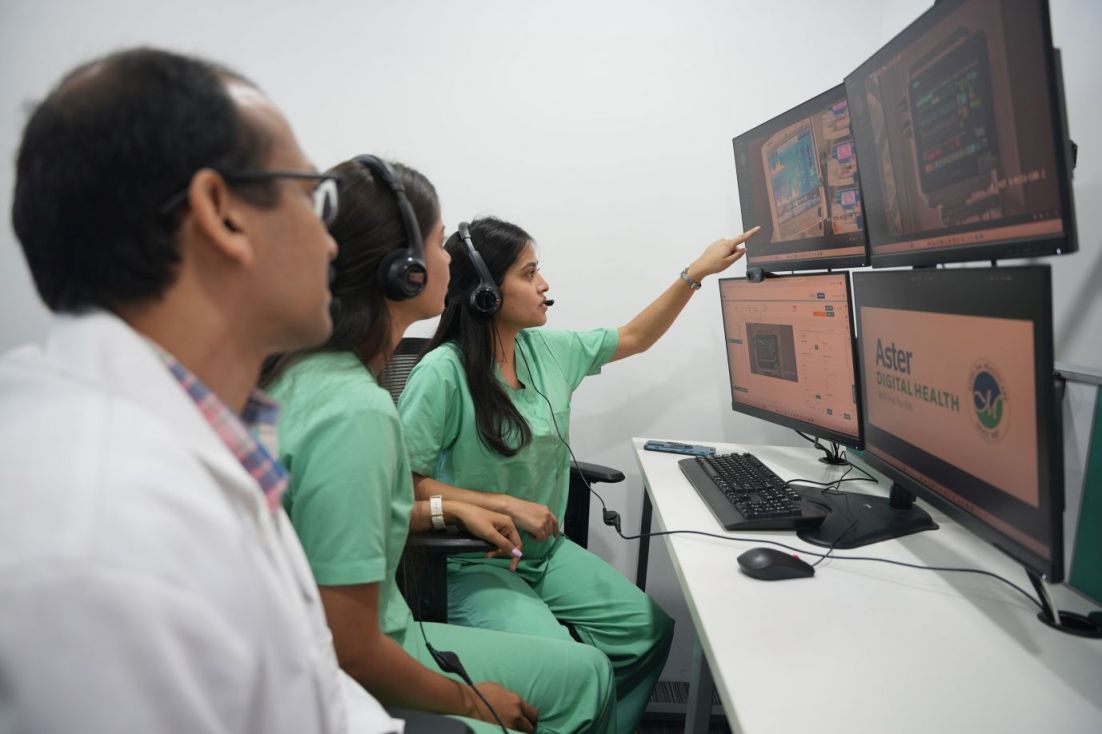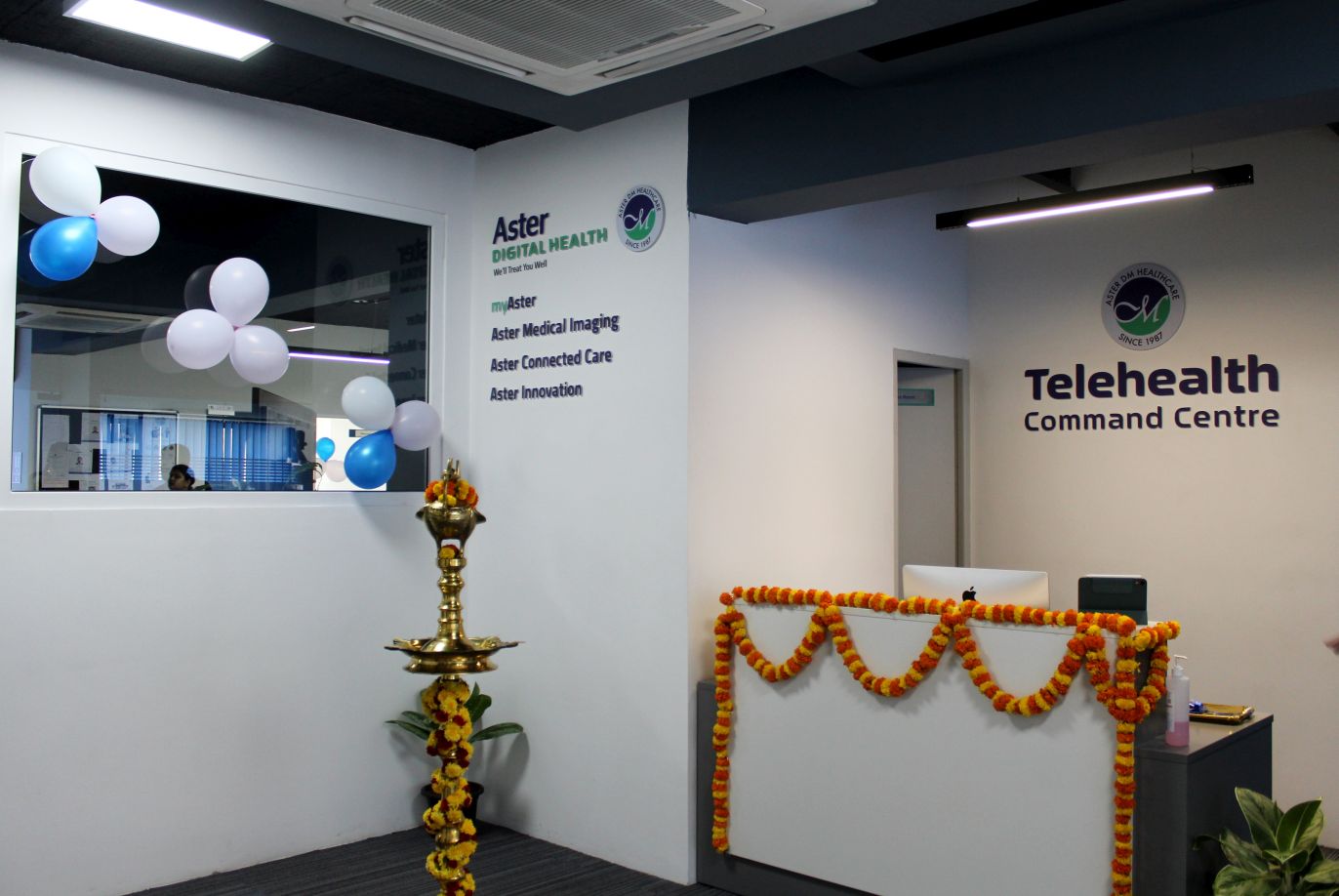The Tele-ICU is a centrally commanded service that will remotely monitor patients and communicate with the connected healthcare provider for regular monitoring
Aster DM Healthcare Limited (“Company”), one of the largest integrated healthcare providers in India, has launched Tele-ICU services under the Aster Connected Care arm in India. The services leveraging technology will provide comprehensive support to healthcare providers to enhance patient care.
The Aster Connected Care Tele-ICU services provide key critical care services such as expert intensivists availability, continuous monitoring of ICUs by qualified critical care staff, 24/7 audio visual communication, rapid response alerts, regular virtual rounds, support & counselling of patients and their families. Data driven clinical decision approach ensures best possible care and treatment outcomes for patients.

Dr. Harsha Rajaram, CEO of Aster Digital Health, stated, “The potential of digital technology is boundless. Aster Tele-ICU brings global standard of critical – care through its experienced intensivist and critical care nurses by leveraging technology. Our services span across various geographies and time zones, and support as a second eye to the on-ground teams in Tier 2 and Tier 3 cities. Our solution aims at bridging the gap by making available qualified experienced intensivist at a click of a button and, our evidence-based practice ensures high-quality patient care.”
Going further, the division aims to expand by partnering with small and medium-sized hospitals in tier 2 and tier 3 cities throughout India. The objective is to utilize Aster’s skilled manpower to deliver critical care services to areas that lack specialized expertise, using a hub-and-spoke model.
The tele-icu services which had a soft launch four months ago have already provided valuable assistance to 250+ patients in some of the remotest villages in states like Bihar and Karnataka underscoring the effectiveness and significance of this service in delivering critical care to those in need. The team also has deployed an intelligent and robust technology that is secure, safe, and easy to use. The presence of 24/7 command centre, and a well-qualified critical care team, well experienced and specialized in monitoring, aims to bridge the gap in quality critical care in the rural sector.
As the boundaries of healthcare continue to blur, Tele-ICU stands as a beacon of hope, extending the reach of critical care beyond hospital walls. In an era defined by uncertainty, one certainty remains: the promise of Tele-ICU in shaping the future of critical care, one life-saving intervention at a time.

Case studies
A 62-year-old female patient in an ICU set up of a remote village in Bihar laid unattended vowing to the other staff at the hospital being overloaded with patients at the hospital. The unattended patient developed an altered sensorium (change in consciousness, and a sudden spurt of hypertension, thankfully miles away in Bangalore a remote ICU team of Aster group who have been monitoring this patient 24×7 quickly identified the change and called on the on-floor medical team and directed them to begin therapy – a 3% saline solution IV and continued monitoring the patient sodium level. This case demonstrates the difference an expert second eye can make in supporting busy remote centers.
This instance highlights the crucial role that Tele-ICU plays in improving the quality of treatment for patients who are critically sick, especially in situations when specialist knowledge and ongoing monitoring are needed.
In another Hospital across India, analyses of arterial blood gas showed Type 1 Respiratory Failure. The anesthetist / ICU in-charge at this time was away from hospital. Remote Aster Tele-ICU teams who have been monitoring this patient, quickly with help of medical officer on ground, assisted in non-invasive breathing assistance and antibiotic medication leading to significant recovery of the patient. The timely hand holding of the medical officer who is the only available resource at that time by remote qualified and experienced team demonstrates that simple act of assistance & confidence building can make a huge difference in helping hospitals were finding an expertise is a challenge.
Another remarkable intervention involved a 16-year-old patient from Northeast, who was suffering and presented with complaints of breathlessness, exhibiting tachypnea and desaturation. Arterial blood gas advised by Aster Tele-ICU team revealed Type 1 Respiratory Failure. The tele-ICU team’s hawkeye facilitated immediate non-invasive ventilation support and oxygen tapering based on SpO2 levels, alongside antibiotic therapy, leading to significant overnight improvement. The patient received timely attention which helped in the recovery resulting in a relieved and improving patient. This case demonstrates the pivotal role tele-ICU enables rapid interventions and expert guidance.





